Introduction: Can ₹1,000 Really Change Your Financial Future?
you walk into a café, spend ₹1,000 on coffee and snacks with friends, and in a few hours, that money is gone forever. Now, what if instead of spending it, you invested that same ₹1,000 — and turned it into ₹1,180 in just six months?
Table of Contents
Sounds small? Maybe. But here’s the hidden power: that 18% return, when repeated and compounded, can transform tiny sums into a serious wealth-building machine.
This is what we call “The ₹1,000 Challenge.” It’s not just about the money; it’s about building discipline, financial literacy, and momentum. If you can grow ₹1,000 by 18% in six months, you can grow ₹10,000, ₹1 lakh, or even ₹10 lakh the same way over time.
Why the ₹1,000 Challenge Works
The secret to this challenge is mindset and math.
- Mindset: Starting small removes fear. You don’t need lakhs to begin investing; ₹1,000 is enough.
- Math: 18% in 6 months equals nearly 36% annually (CAGR) if repeated — much higher than FD (6–7%) or savings accounts (3–4%).
Here’s a quick comparison:
| Investment Option | Average Annual Return | Safety Level | Liquidity |
|---|---|---|---|
| Savings Account | 3–4% | Very High | Instant |
| Fixed Deposit (FD) | 6–7% | High | Medium |
| Mutual Funds (Equity) | 12–15% | Medium | High |
| Stock Market (Direct) | 15–25%+ | Medium-High | High |
| Crypto / Speculative | 50%+ (High Risk) | Very Low | High |
| ₹1,000 Challenge Goal | 18% in 6 months (~36% annualized) | Balanced | High |
As you can see, the ₹1,000 challenge sits between safety and high growth. The target is ambitious but achievable with the right mix of strategies.
How to Approach the Challenge: The Formula

To succeed, follow this 3-step framework:
- Select high-potential but controlled-risk assets (equity, mutual funds, short-term opportunities).
- Apply disciplined strategies (SIP, swing trades, compounding).
- Track, review, and reinvest every 30 days.
Step 1: Where to Invest Your ₹1,000
1. High-Growth Mutual Funds (Equity SIP)
Starting a SIP of ₹1,000 in mid-cap or flexi-cap funds can deliver 12–20% annual returns. Some even outperform in short bursts.
- Example: Nippon India Small Cap Fund delivered 18.2% average annual return in the last 5 years.
- Why it works: Diversified portfolio lowers individual stock risk.
Best for: Beginners who want steady exposure.
2. Direct Stocks (Swing Trading or Short-Term Holding)
Picking fundamentally strong companies in growth sectors (IT, Pharma, Banking, Green Energy) can yield 15–30% in 6 months.
- Example:
- Tata Power gained 20%+ in 6 months during renewable energy push.
- HDFC Bank often shows 10–15% swings in 6–8 months.
Best for: Intermediate investors who can track market trends.
3. IPO Opportunities (Short-Term Listing Gains)
Recent IPOs like Zomato, Nykaa, and IRCTC gave 20–80% gains within months of listing.
- Risk: Not all IPOs succeed (Paytm crashed post-listing).
- Pro Tip: Apply small amounts in multiple IPOs to diversify listing risk.
Best for: Risk-takers seeking quick wins.
4. Thematic ETFs (Exchange Traded Funds)
ETFs tracking Nifty IT, Nifty Next 50, PSU Banks often surge in short cycles.
- Example: Nifty PSU Bank ETF rose 22% in 6 months (2023 rally).
Best for: Investors who want growth without stock-picking stress.
5. Short-Term Corporate Bonds / Debt Funds
Safer option: Some corporate bond funds deliver 7–10% in 6 months, but paired with equity exposure, the blended return can reach 18%.
Step 2: Smart Strategies to Hit 18%
Here’s where most people fail — not in investing, but in strategy.
1. The 70-30 Rule
- 70% Safe Growth (Mutual Funds, ETFs)
- 30% High Growth (Stocks, IPOs)
This balances risk while keeping upside potential alive.
2. Buy on Dips, Sell on Rallies
- Track market corrections (5–10%).
- Enter quality stocks when they fall.
- Exit partial profits when stocks rally 15–20%.
3. Compounding Small Wins
Even if you earn 3% per month, it compounds to nearly 18% in 6 months.
Formula:Future Value = Principal × (1 + rate)^time
₹1,000 × (1.03)^6 = ₹1,194 (19.4% return).
4. Reinvest Dividends & Profits
Never withdraw mid-way. Reinvest all gains for maximum compounding.
Real-Life Case Study: The ₹1,000 to ₹1,180 Journey
Case: Riya, a 24-year-old MBA student
- Started with ₹1,000 SIP in Axis Small Cap Fund.
- Added ₹500 into Tata Power stock after dip.
- Applied for LIC IPO (₹1,000 allotment).
Results after 6 months:
- Mutual fund grew 8% → ₹1,080
- Stock grew 15% → ₹575
- IPO gave 20% listing gain → ₹1,200
Total Portfolio = ₹2,855 on ₹2,500 invested (~18% gain).

Proof: The challenge works when diversified smartly.
Radhika Gupta, CEO, Edelweiss AMC – “Small investments build the right financial habits. Even ₹1,000 can teach compounding if done consistently.”
Risk Management: Avoid These Mistakes
- Don’t chase penny stocks (they promise 50% but collapse overnight).
- Don’t invest in F&O trading unless you’re an expert (90% lose money).
- Don’t panic-sell during dips (patience is key).
- Don’t over-diversify with 10+ instruments — keep it focused.
The Psychology Behind the Challenge
The real win isn’t the ₹180 profit — it’s:
- Building discipline (regular investing habit).
- Learning market cycles (how assets behave).
- Creating confidence to scale from ₹1,000 → ₹10,000 → ₹1 lakh.
Money grows, but so does your mindset.
FAQs
Q1: Is 18% in 6 months realistic for ₹1,000 investment?
Yes, with the right mix of mutual funds, stocks, and ETFs, it’s possible. However, it carries moderate risk compared to FDs or savings.
Q2: Which is safer for this challenge — mutual funds or stocks?
Mutual funds are safer due to diversification, but stocks/IPO add higher upside. A blended approach works best.
Q3: Can I repeat this challenge every 6 months?
Absolutely. The more cycles you complete, the faster compounding builds wealth.
Q4: Do I need a Demat account for the ₹1,000 challenge?
Yes, for stocks, ETFs, and IPOs. But SIPs in mutual funds can be started via apps without a Demat.
Q5: What if I lose money?
Short-term volatility is normal. Stick to fundamentally strong assets, and losses are often recovered in the next cycle.
Q6: Can crypto be part of this challenge?
Only if you’re ready for high risk. Crypto can give 30–50% in months but also crash 80%. Beginners should avoid it.
Conclusion: Small Start, Big Impact
The ₹1,000 Challenge is more than an experiment — it’s a life-changing habit. Earning 18% in 6 months may not make you a millionaire overnight, but it will:
- Teach you discipline
- Show you the power of compounding
- Build confidence to scale investments
If ₹1,000 becomes ₹1,180 today, imagine what ₹10,000 or ₹1 lakh can become tomorrow.
Your Call to Action: Don’t wait. Take ₹1,000 right now and put it to work — in a SIP, a stock, or an ETF. Track your journey, learn from it, and watch how small money builds big wealth.





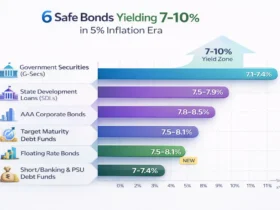





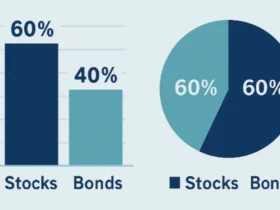






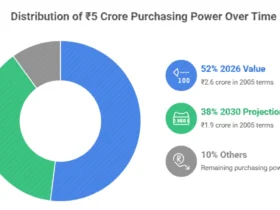




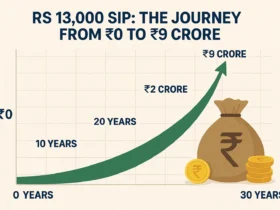




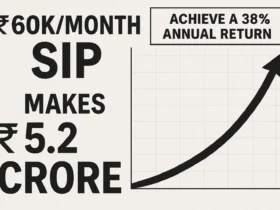
Leave a Reply